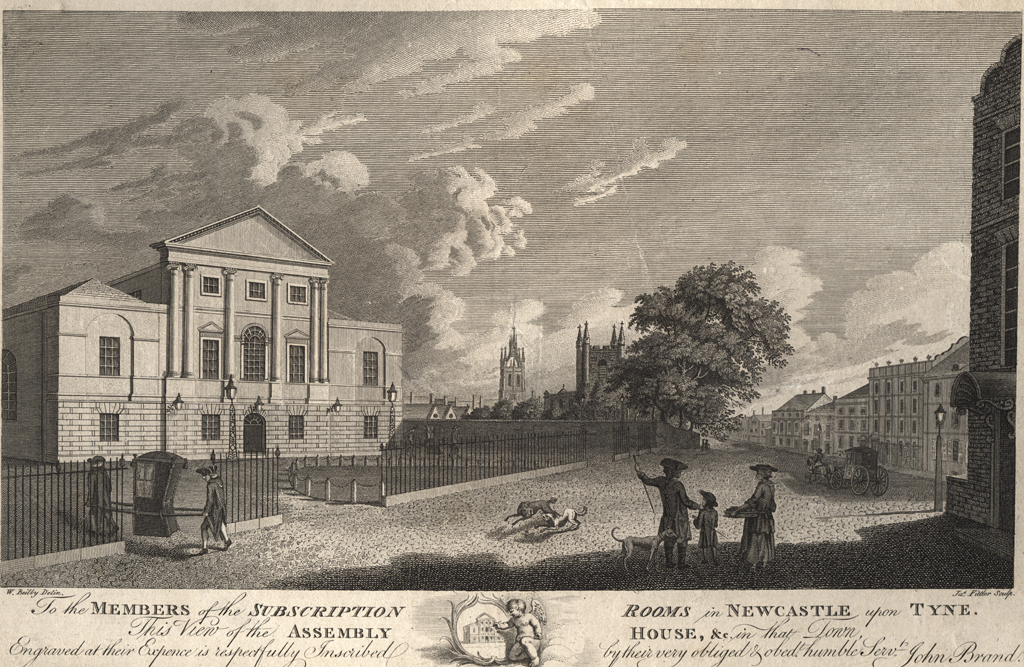
Assembly Rooms, Fenkle Street
Assembly Rooms, Fenkle Street
HER Number
6981
District
Newcastle
Site Name
Assembly Rooms, Fenkle Street
Place
Newcastle
Map Sheet
NZ26SW
Class
Civil
Site Type: Broad
Meeting Hall
Site Type: Specific
Assembly Rooms
General Period
POST MEDIEVAL
Specific Period
Hanoverian 1714 to 1837
Form of Evidence
Extant Building
Description
The original assembly rooms lay opposite the garden of St. Johns Vicarage (HER 6666). In 1736 the assembly rooms were demolished and moved to a new site in the Groat Market. In 1776 the assembly rooms were rebuilt opposite the original site in "the pleasantest part of the town inhabited by the clergy and gentry". The rooms were paid for by public subscription. Designed by William Newton. Consists of two suites of rooms, the great ballroom on the upper floor, approached from the ground floor vestibule by a fine staircase and surrounding by subsidiary rooms. LISTED GRADE 2*. Cost ÂŁ6700. Fitted with 7 Rococo chandeliers made of 10,000 pieces of hand-cut crystals. Charles Dickens played here on 27 August 1852. Strauss gave a concert on 21 October 1838. Edward VII, George V and George VI have visited the assembly rooms. In 1967 the building fell into repair and was proposed for demolition in 1974. However it was bought by the Michaelides family and restored to its former glory. On 31 December 1777 a young woman threw herself off the musician's gallery to her death on the ballroom floor below. Her ghost is said to haunt the building, accompanied by the rustling noise of a taffeta ball dress and the scent of lavender {Kirkup 2009}.
Easting
424600
Northing
564060
Grid Reference
NZ424600564060
Sources
Plan of Newcastle upon Tyne, 1945; A.D. Walton, 1993, Bygone Westgate Road; The Friends of the Old Assembly Rooms, 1968, The Old Assembly Rooms, Newcastle upon Tyne; Thomas Oliver, 1844, Historical and Descriptive Reference to the Public Buildings on the Plan of the Borough of Newcastle upon Tyne and Gateshead; Rob Kirkup, 2009, Ghostly Tyne & Wear; Grace McCombie, 2009, Newcastle and Gateshead - Pevsner Architectural Guide, p. 14